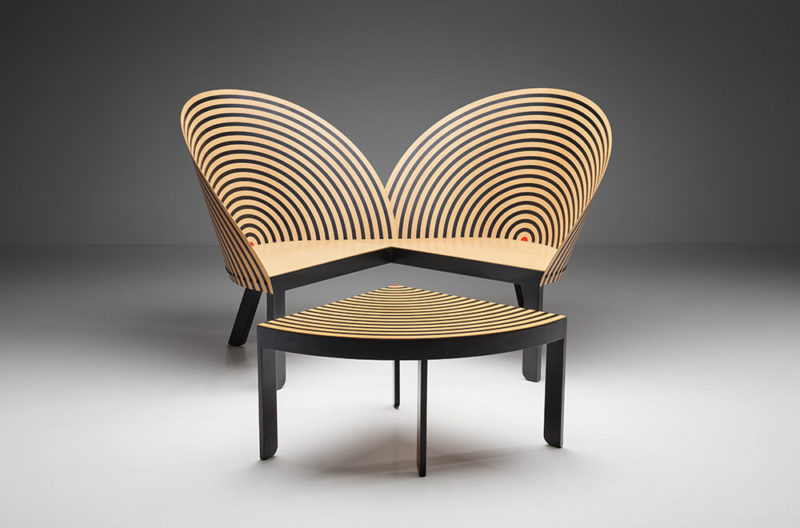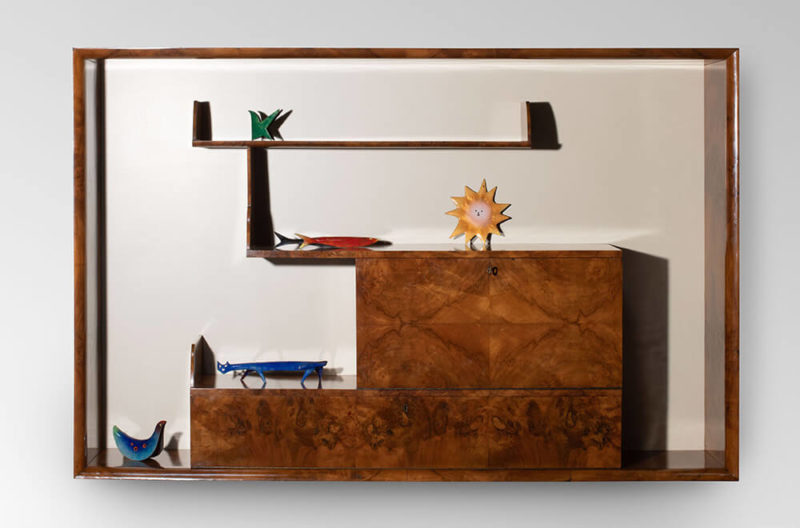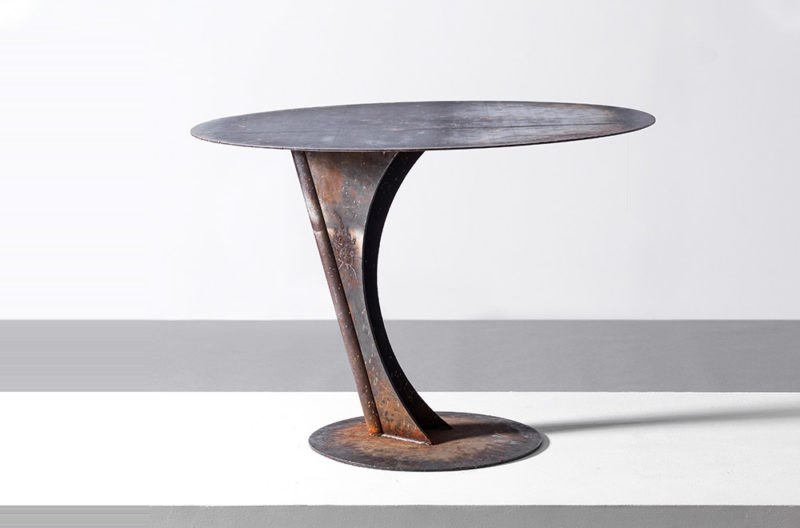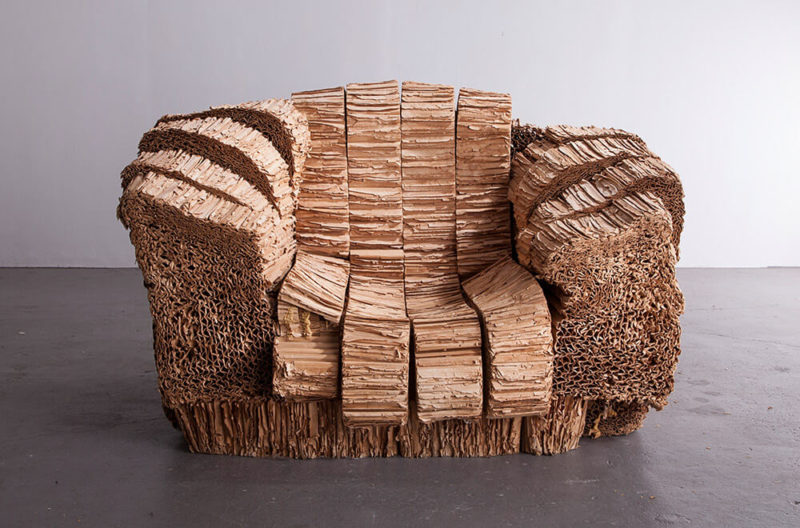‘Ceiling light model K2-33’, circa 1950s
Paavo Tynell for Taito Oy.
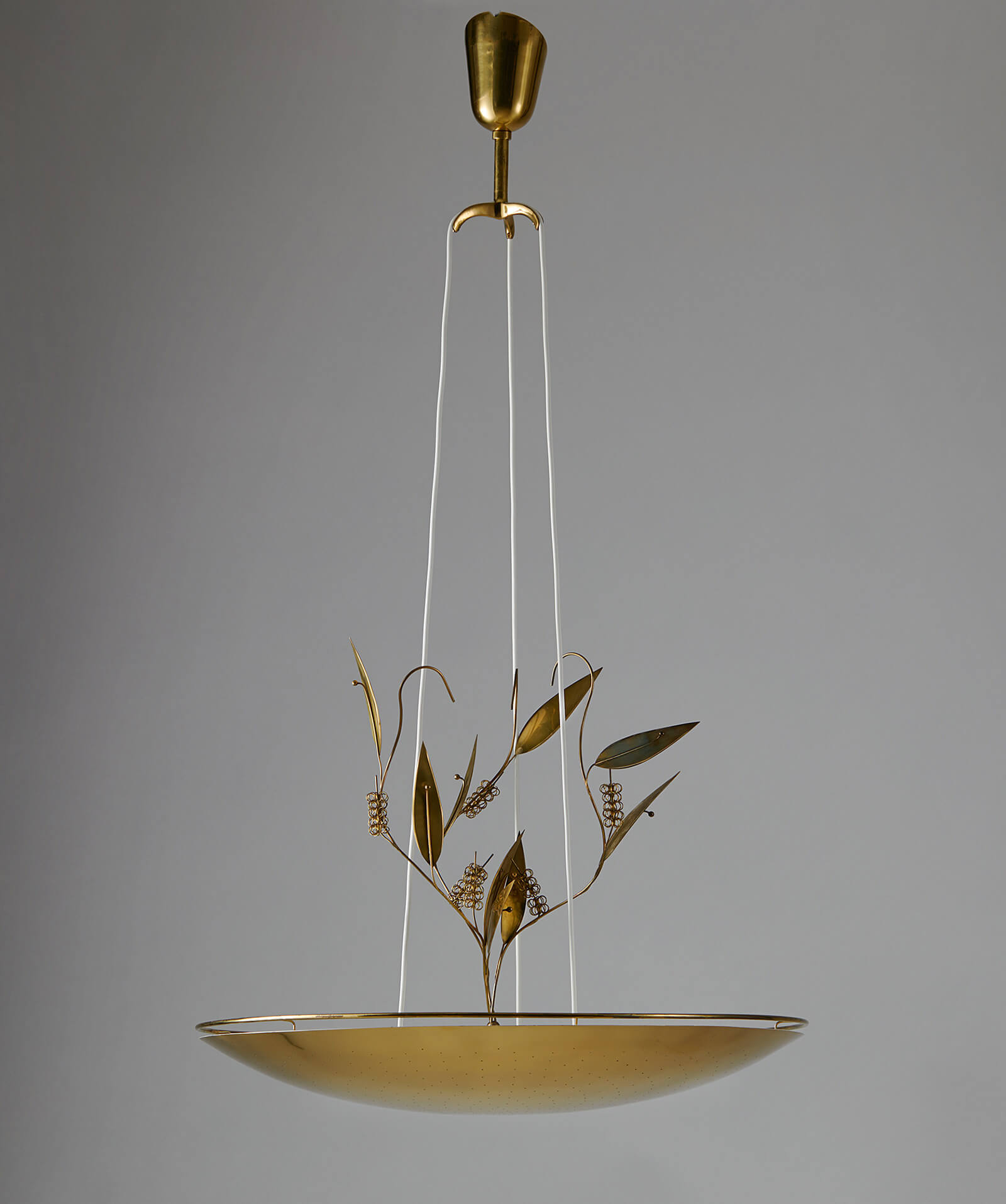
Paavo Tynell for Taito Oy, ‘Ceiling light model K2-33’, circa 1950s
COURTESY: Modernity
THE DELICATE LIGHTS of Finnish designer Paavo Tynell (1890-1973) are unmistakable. His minimalist forms, often created from perforated metals, are paired with warm metal fittings and soft curving lampstands. Most recognisable of all are his chandeliers and ceiling lights of the 1940s and 1950s, where metal cut out leaves, snowflakes or vines (sometimes enamelled) dance on metal wires in the light held in the chandelier’s base – creating patterns of light and shadow on the wall. This pierced brass ceiling light is a particularly beautiful example, with its spare, elegant curving plant forms rising from the circular dish as if from the earth. Typically Finnish in its feeling for nature, the design has a restrained, stylised economy that is universally appealing. It was commissioned for a Church in the Finnish town of Kuopio in the 1950s.
Tynell initially trained as a tinsmith and blacksmith in Helsinki, qualifying as a master craftsman in 1913 while working for Koru Oy, a Finnish art metal forging company. He then moved from metalwork to jewellery, showing a talent for delicate work on a minute scale. He even crafted the wedding rings of his friends and fellow designers, Alvar and Aino Mandelin Aalto. Identifying a gap in the market, he founded the company Oy Taito Ab with four colleagues in 1918, designing metal objects, from industrial lighting to more demanding art metalwork, such as statues, railings and silverware. But the opportunities to design for electric light were burgeoning and by the 1930s Taito Oy began to focus more on lamps, with Paavo Tynell as their head designer and CEO. Tynell’s friendships won him work with many of Finland’s leading architects, including the company contracts to produce fixtures for all of Alvar Aalto’s major projects, including the Paimio Sanatorium and the Viipuri Library, as well as for numerous Finnish public buildings.
International awards and acclaim at the Barcelona World Exhibition in 1929 and Milan Triennale in 1933, were followed, in 1947, by Tynell’s involvement with Finland House – a design atelier in New York showcasing the work of Finnish designers and craftspeople. Tynell provided all the lighting for the restaurant and gallery, winning him a new audience. He continued to work with architects, both in Finland and the United States, his most prominent project being his lighting design for the office of the Secretary-General in the United Nations building in New York, in 1952.
This poetic ceiling light is on view until the end of the week at the London showroom of 20th century Scandinavian design gallery, Modernity, in Cavendish Square.
Modernity – specialises in the collection and sale of rare and high-grade furniture, ceramics, glass, lighting and jewellery by the most renowned Scandinavian designers of the 20th century.




